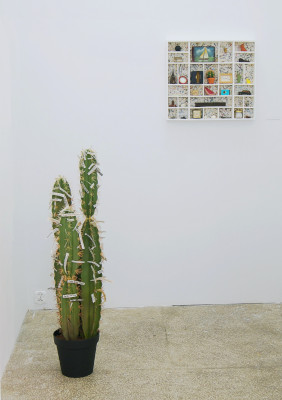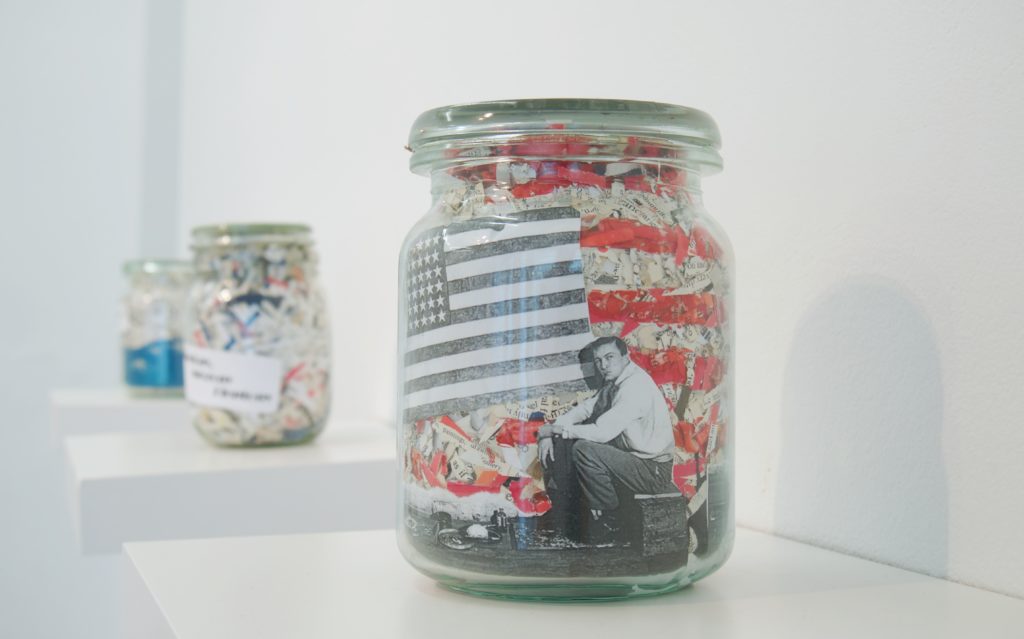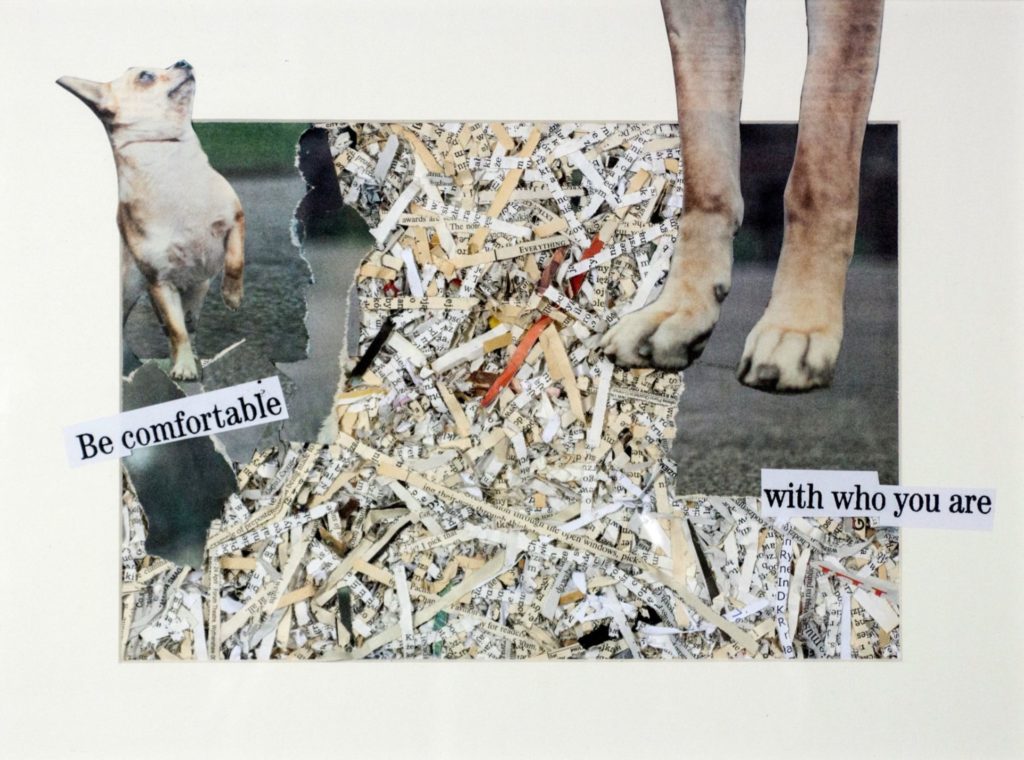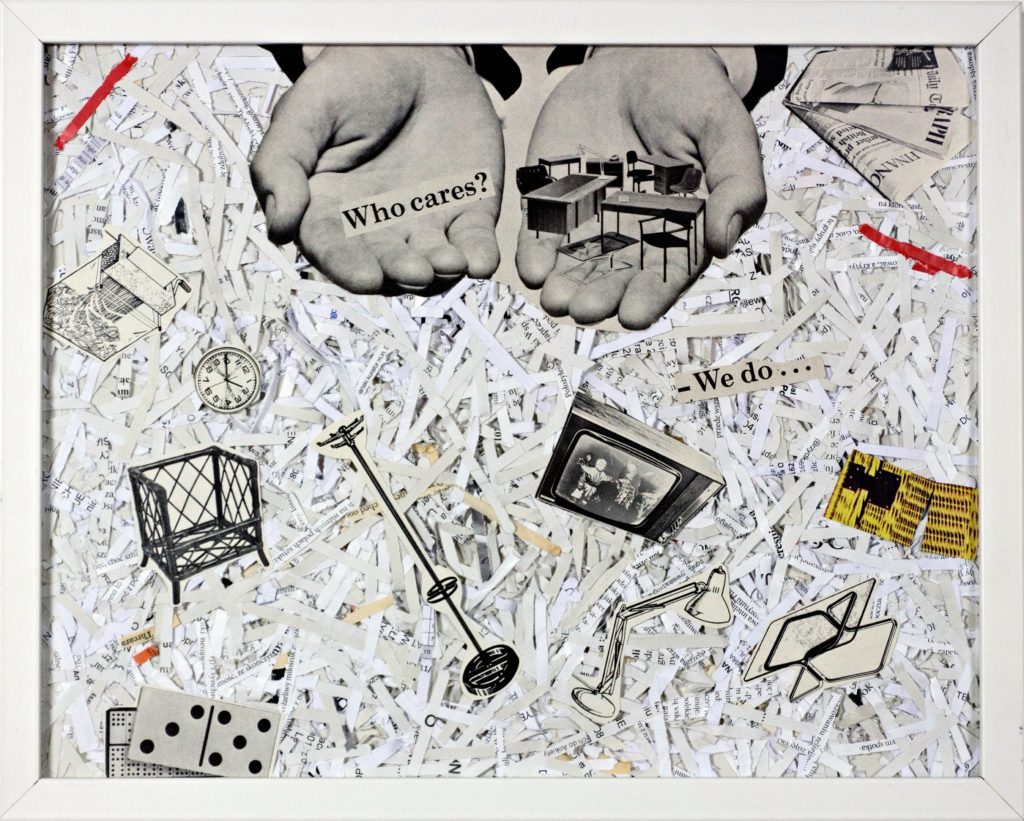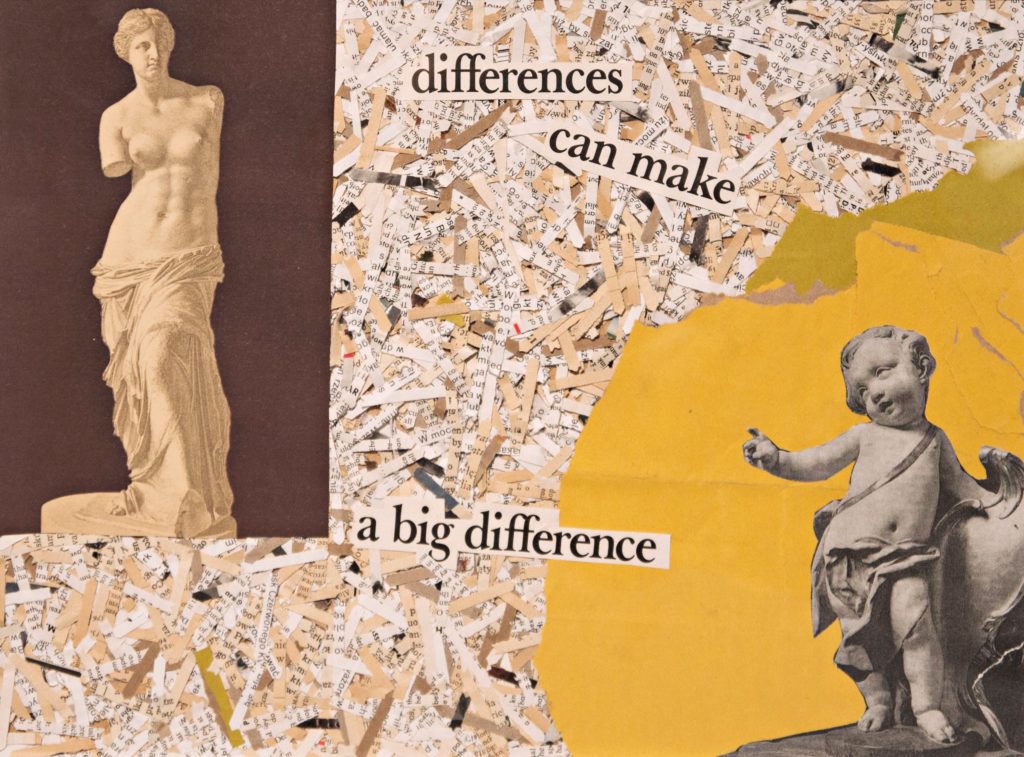
opening: June 27, 2019, 7 p.m. the exhibition is on view through Septeber 7, 2019 Tuesday-Saturday, 12 noon–19 p.m.
Does so much depend on the way of looking? Is everything a matter of taste? Do small differences really matter so much? Natalia Brandt asks these rhetorical questions not so much searching for answers as playing on the rhetorics of various patencies.
In the series Latent Relations of Things (2017-2019), in surprising configurations of references, a tangle of forms, shapes, and words of sly, tongue-in-cheek, commentary, the artist constructs a kind of „visual aphorisms.” She presents several dozen colour collages, using old books, magazines, engravings, illustrations, documents, and various objects.
With superimposed layers of mixed punctuation marks, letters, numbers, words, sentences, fragments of images, photographs, prints, or coins, she arranges new narrative structures. Combining seemingly incompatible contents, she produces aphoristic representations, replete with sense of humour and ulterior references to art history, modernist canons, avant-garde styles, or cultural myths and discourses.
These works find their themes in openly facetious puns and wordplay, but also in latent tie-ups activating ever larger circles of reference and allusion. In works harkening back to the iconic art of the first Avant-Garde, Brandt pulls us into traps of changing discourses on totalizing ambitions to organize the world.
The currently dominant interpretations of works of the Avant-Garde classics were alluded to by Brandt in earlier projects, such as in the series of assemblage compositions titled Belated Conversations with Kurt Schwitters (2010). The time-deferred interviews with the champion of Dada absurdism were an expression of her fascination with his “art of fragments,” but also of a sense, palpable throughout the series, that art discourses are essentially underdetermined.
Latent Relations of Things are not about dialoguing with this or that artist, a repertoire of postmodern woes, or another reinterpretation of the Black Square or the Mona Lisa. Brandt rummages through the modernist (and earlier) ruins not only for the sake of collage-style recycling. Her compositions are made with scraps of paper, shredded manually or mechanically and then meticulously arranged into multilayer systems. She also simply collects small pieces of paper and puts them in jars, as in Baryons, Mesons, and Leptons, where they may be considered as elementary particles carrying a potential of unknown combinations. Sealed in a jar, the paper shreds do not have a predetermined place in a larger set-up, as puzzle pieces do, but are rather like repositories of unpredictable contemporary ways of “reading” visual culture.

